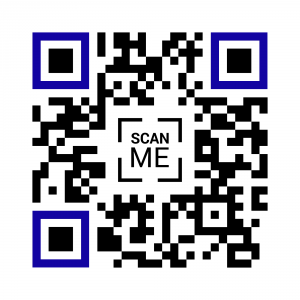 I’ve been doing a lot of reading about QR codes lately. Remember them? They were all the rage a few years back, but now seem to have fallen to the wayside. Maybe you never used them, or like me, maybe you never really understood what they were or even how to use them. In my case, I didn’t have a smart phone so it was a moot point. But now it seems everyone has a smart phone and still few people use or understand QR codes. Take for instance our current batch of students, digital natives for sure, when presented with a QR code during an instructional technology lesson. 100% had a smart phone or tablet, but none of them had a QR code reading app installed. Few of them had ever used a QR code, but many of them could see how they might use these handy little shortcuts in their future.
I’ve been doing a lot of reading about QR codes lately. Remember them? They were all the rage a few years back, but now seem to have fallen to the wayside. Maybe you never used them, or like me, maybe you never really understood what they were or even how to use them. In my case, I didn’t have a smart phone so it was a moot point. But now it seems everyone has a smart phone and still few people use or understand QR codes. Take for instance our current batch of students, digital natives for sure, when presented with a QR code during an instructional technology lesson. 100% had a smart phone or tablet, but none of them had a QR code reading app installed. Few of them had ever used a QR code, but many of them could see how they might use these handy little shortcuts in their future.
What I like best about QR codes is that they can do more than load a web URL. They can generate an e-mail, text, vCards, SMS, and phone numbers. There are paid services that extend their functionality with PDF files, Facebook pages, App Stores, Image Galleries, MP3 files, and multiple URLs based on time and/or location.
The key to making QR codes work in the classroom is using them for what they’re designed for, mainly providing quick access to complicated URLs, which is great for younger children or students with disabilities. Use them frequently in presentations so students can quickly bookmark websites or add one to posters that take students to websites which extend learning. But be certain the address they link to is actually working. There’s nothing more frustrating to students than tech that doesn’t work (well maybe there are are more frustrating things, but they don’t come to mind).
That being said, at the end of the day, QR codes are only dead if your imagination for how to use them is also dead. Just sayin…
